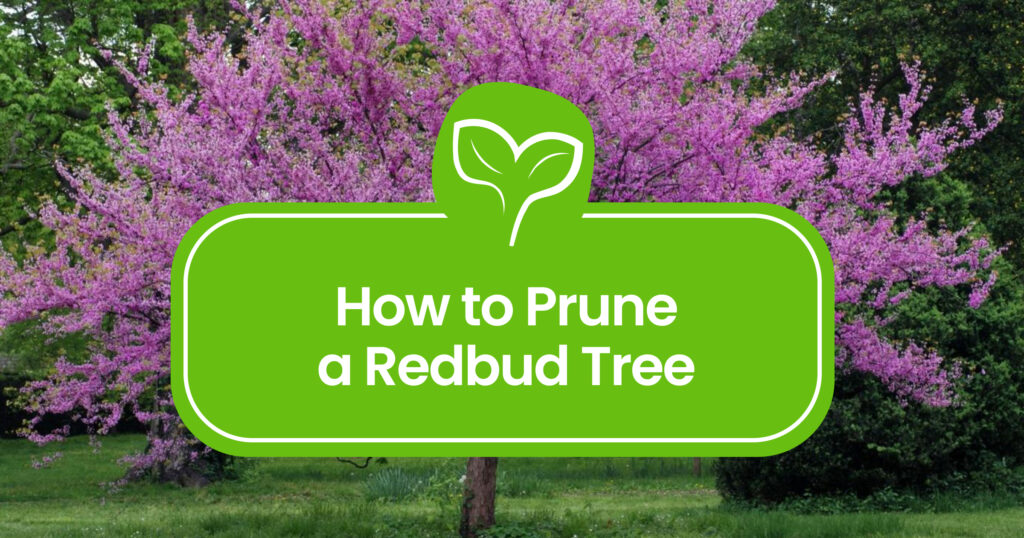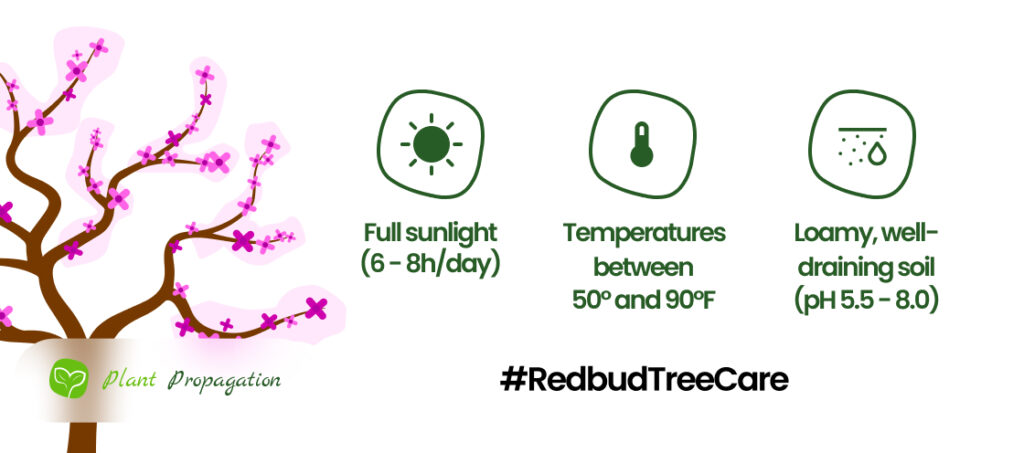
Welcome to the ultimate guide on How to Prune a Redbud Tree! In this article, we’ll uncover the perfect timing, essential techniques, and necessary tools for transforming your redbud into a thriving beauty. We’ll learn when to prune, the basics of redbud pruning, and the must-have tools for the job. Let’s dive into the world of redbud tree pruning and bring out the best in your garden!
When to Prune a Redbud Tree
Typically, the optimal time to prune Redbud Trees is post-flowering in the spring. It’s akin to waiting for the tree’s floral showcase to wrap up before giving it some grooming attention.
However, late winter is also an option if you’re feeling proactive and want to begin before the full bloom. This period finds the tree in its dormant phase, a time when it’s still resting. Just bear in mind, that pruning in late winter may mean sacrificing a portion of those lovely blooms that are about to emerge.
The Basics of Pruning Redbud Trees
Pruning a redbud tree demands precision and knowledge. Here are the basics you need to know before touching those pruning shears.
- Maintain Clean Tools: After every cut, sterilize your pruning equipment with rubbing alcohol. It’s crucial to sanitize even if you’re working on the same branch to prevent the spread of infections.
- Timing Matters: Target dead or diseased branches for pruning during late winter or early spring when the tree is dormant. Alternatively, if you cherish the winter blooms, consider pruning post-flowering in spring.
- Disease Identification: Educate yourself on spotting Cankers and Verticillium wilt, common threats to redbud trees. Promptly prune affected branches to curb the spread of these diseases.
- Thorough Examination: Check beneath the surface when pruning. If the exposed wood still appears unhealthy after a cut, there may be lingering disease requiring further attention.
- Exercise Patience: Avoid hasty decisions. A seemingly lifeless branch might surprise you with signs of life in a few weeks or the following spring.
The Tools You’ll Need
Before you start, make sure you have everything you might need for pruning your Redbud tree. This includes quality pruning shears, loppers, and maybe a saw for those thicker branches. Once again, you want to use only sanitized tools to avoid any infections. Since Redbud trees can grow pretty large, you also want to have the proper safety gear: puncture-resistant gloves and safety glasses are a must!

How to Prune a Redbud Tree Step-by-Step
Pruning a redbud tree in the right way requires a patient approach. Here’s a step-by-step breakdown to achieve the best results:
- Start with Strategy: Remember, it’s easier to prune more later, but you can’t undo a cut. Take your time and step back often to assess your progress.
- Remove Diseased branches: Begin by eliminating crossing, diseased, or dead branches. It sets the stage for healthier growth.
- Cut with Precision: When pruning, aim to snip to a bud on young stems or to a branch/trunk, leaving about half an inch of the stem rather than trimming flush with the trunk. This careful technique promotes proper healing.
- Branch Arrangement Matters: Remove branches directly above or below others to encourage a more appealing tree structure, even though it may not impact the tree’s health.
- Managing Lower Growth: To prevent low branches once the tree reaches maturity, gradually remove larger lower branches every year or two.
Aftercare
Redbud Tree Aftercare and Health Maintenance
Caring for your pruned redbud tree is vital to its ongoing health and vigor. Begin by vigilantly monitoring for any signs of diseases or distress. Here’s how to ensure optimal care post-pruning:
- Disease Watch: Keep a keen eye for any signs of diseases or unusual symptoms. Early detection is key to addressing potential issues promptly.
- Sunlight & Temperatures: Provide your redbud tree with the perfect environment it craves. Ensure it receives a minimum of 6-8 hours of full sunlight daily. Maintain temperatures within the range of 50 – 90 Fahrenheit, offering a comfortable climate for its growth.
- Soil and pH levels: Opt for well-draining, loamy soil that’s pH balanced between 5.5 – 8.0. This soil composition encourages robust growth and overall tree health.
- Mulching Benefits: Consider mulching around the tree base. Mulch helps regulate soil temperature, retain moisture, and prevent weed growth, promoting a conducive environment for your redbud tree’s growth.
- Fertilization: Apply a balanced fertilizer at the start of the growing season to provide essential nutrients for the tree’s continued development.
By adhering to these aftercare practices, your pruned redbud tree stands a better chance of thriving in its environment while showcasing its natural beauty.

Frequently Asked Questions
When is the best time to prune Redbud Trees?
The best time to prune a redbud tree is after it’s done flowering in the spring. But if you want to start a bit earlier, late winter, when the tree is still asleep, is okay too.
What are the dead branches on my redbud tree?
If you see dead branches or canker on your Redbud Tree, there is a pretty good chance that you are dealing with a fungus called Botryosphaeria ribis. You can protect your tree by always using sensitized tools for pruning.
Will a redbud tree grow back from a stump?
Redbud trees are known as coppice species, which means they have a the ability to grow back from a stump. If you keep the soil nice and moist, you’ll likely see several new trunks sprout up in the spring.
These trees have secret buds hiding in their trunk bark, kind of like a backup plan for emergencies or if there’s a fire that affects the above-ground part of the tree.

